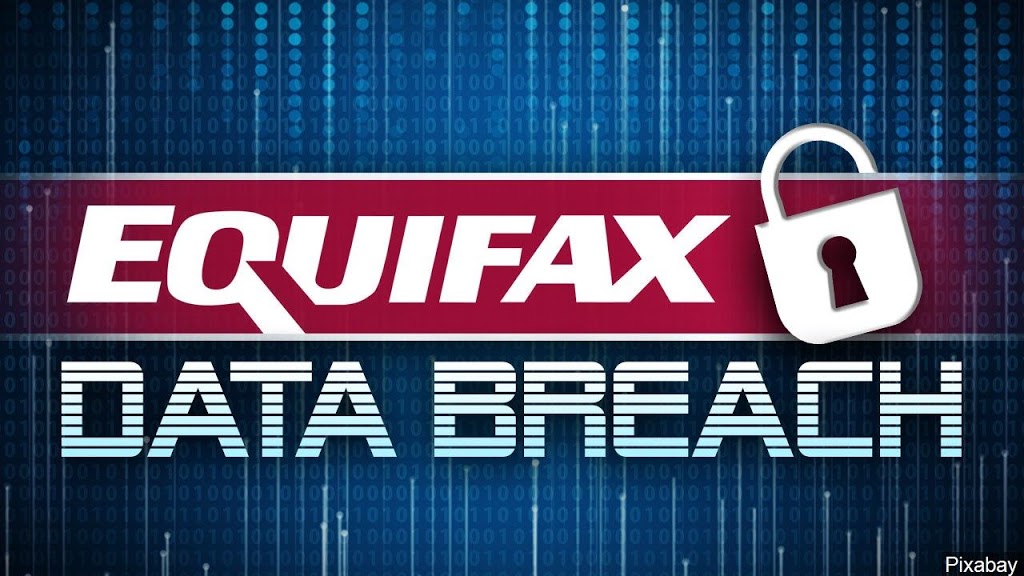
In an era defined by rapid digital advancement, the financial sector finds itself at the nexus of opportunity and unprecedented risk. These institutions, holding the keys to vast repositories of wealth and sensitive personal data, represent uniquely attractive targets for cybercriminals.
The motivations are clear: maximum impact and maximum profit. Unlike many other sectors, a successful breach at a financial firm can yield immediate financial rewards alongside highly valuable data, creating a compelling dual incentive for attackers.
This reality explains why the financial sector is disproportionately targeted by cybercriminals, trailing only healthcare in the frequency of attacks. As institutions embrace digital transformation, they inadvertently create new pathways and opportunities that sophisticated attackers are quick to exploit.

The financial fallout from these incidents is staggering. Reports indicate that by 2024, the average cost per breach in the financial sector is projected to hit $6.08 million. This figure stands 22% higher than the global average across all industries, underscoring the severe economic consequences.
Dominant attack methodologies include phishing and ransomware, frequently exploiting vulnerabilities that arise from complex third-party integrations, aging legacy systems, and, critically, human error. To fortify defenses, implementing sector-specific data protection solutions is vital, but perhaps just as crucial is the practice of learning from the mistakes of others.
To contribute to this critical learning process, an examination of some of the most significant data breaches within the financial industry worldwide offers invaluable insights. By reviewing the circumstances of these major events, organizations can better understand the vulnerabilities that led to compromise and implement strategies to avoid repeating these costly errors.

Ranked by the sheer scale of impact, these ten cases serve as stark reminders of the persistent and evolving threat landscape facing banks, insurers, payment processors, and other financial entities.
The First American Financial Corp. breach, occurring in May 2019, exposed an astonishing 885 million financial and personal records tied to real estate transactions. This colossal leak stemmed from a surprisingly common web design flaw.
Specifically, the vulnerability was identified as a “business logic flaw” on the company’s website. This error meant that a web page link intended to access sensitive information lacked a proper authentication policy, failing to verify if the user had legitimate access rights.
The exposure was not the result of external hacking but rather an internal error, characterizing it as a data leak. While distinct from a data breach initiated by a hacker, data leaks share the same dangerous outcome: sensitive customer information potentially falling into criminal hands.

The compromised data included names, email addresses, and phone numbers belonging to closing agents and buyers. This information is fertile ground for various cybercrimes, including identity theft, ransomware attacks, and malware injections.
Lessons from this incident highlight the necessity of rigorous internal processes. Implementing code review policies, where code is checked by quality control officers before going live, can catch such design flaws. Furthermore, monitoring for data leaks using a dedicated detection solution can help identify and shut down internal or third-party leaks before they are discovered and exploited by cybercriminals.
The Equifax data breach, disclosed in September 2017 after occurring between May and July of that year, stands as a monument to disastrous cybersecurity failures. The incident impacted approximately 147 million customers, affecting over 40% of the U.S. population, alongside individuals in the UK and Canada.
The breach was facilitated by a confluence of poor security practices. A critical vulnerability (CVE-2017-5638) in the Apache Struts development framework used by Equifax remained unpatched for six months after a fix became available.
The company also failed to segment its network ecosystem, allowing attackers who gained initial access through the vulnerable web portal to move laterally and access multiple servers seamlessly. Compounding these errors, attackers found usernames and passwords stored in plain text, which they used to escalate privileges and deepen their access.
Detection was further hampered by Equifax’s failure to renew an encryption certificate for an internal monitoring tool, allowing attackers to exfiltrate data undetected for months. The public disclosure of the breach was also delayed by over a month, during which time top executives faced accusations of insider trading after selling company stock.

The compromised data was highly sensitive, including names, dates of birth, Social Security numbers, driver’s license numbers, credit card numbers (for 209,000 accounts), and sensitive dispute documents (for 182,000 accounts). Due to the nature of the compromised Personally Identifiable Information (PII) and financial data, Equifax was ultimately fined $700 million.
Key lessons from the Equifax disaster resonate across the industry. Keeping all software updated and regularly referencing databases like CVE to stay informed of vulnerabilities is paramount. Attack surface monitoring solutions can automate the discovery of existing and potential software exposures.
Segmenting the ecosystem is crucial to restrict attacker movement; identifying all pathways to sensitive resources and implementing a Zero Trust Architecture can mitigate malicious access. Monitoring third parties using vendor risk management platforms is vital, as vulnerabilities in external services can become attack vectors.
Finally, implementing timely data breach notification policies is not just a regulatory requirement but essential for mitigating harm to impacted individuals and maintaining trust. Delays can result in costly fines and legal repercussions.

The Heartland Payment Systems data breach, discovered in January 2009, comprised approximately 130 million credit and debit card numbers. This incident unfolded over several months in 2008 after Russian hackers injected malware into the company’s system.
The attackers initially gained access via an SQL injection vulnerability on Heartland’s corporate website. They then spent nearly six months working to access resources processing credit card data, ultimately succeeding in deploying sniffer software to intercept data in transit.
Albert Gonzales and two partners were indicted for the attack, with Gonzales receiving a 20-year prison sentence. In the aftermath, Heartland significantly upgraded its security and, in a bold move to restore confidence, issued a data breach warranty.

As the company stated: “Heartland Payment Systems is so confident in the security of its payment processing technology that, on Jan. 12, it announced a new breach warranty for its users. The warranty program will reimburse merchants for costs incurred from a data breach that involves the Heartland Secure credit card payment processing system.” Ironically, after this announcement, the company suffered another physical security incident: 11 computers were stolen from its payroll office, compromising data for 2,200 people.
The data compromised in the main Heartland breach included credit card numbers, expiration dates, and cardholder names. The secondary physical theft compromised Personal Identifiable Information.
Lessons learned include the critical point that regulatory compliance alone is insufficient. Heartland was compliant with PCI DSS at the time of the incident, yet it was breached, highlighting the need for security systems specifically addressing breach vulnerabilities in addition to frameworks.
Implementing internal security protocols is as vital as external defenses; securing physical inventory housing sensitive resources prevents breaches like the payroll office theft. Furthermore, the impact on businesses partnered with Heartland underscored the necessity of securing third-party systems through robust vendor risk management.

The Capital One data breach, discovered in July 2019. This event impacted over 106 million individuals across the United States and Canada.
The cause was a misconfigured web application firewall within Capital One’s Amazon Web Services (AWS) cloud environment. The attacker, Paige A. Thompson, a former AWS software engineer, leveraged her prior knowledge to access and download a substantial 30 GB of sensitive customer information.
Thompson made little effort to conceal her identity, posting the stolen data on GitHub and openly discussing the breach on social media. Capital One was alerted to the data dump via an email from a GitHub user.
The compromised data included names, addresses, phone numbers, email addresses, and dates of birth, along with detailed credit information like scores, limits, balances, and payment history. Crucially, it also included sensitive identifiers: approximately 140,000 U.S. Social Security numbers, about 1 million Canadian Social Insurance numbers, and 80,000 U.S. bank account numbers.
The sheer volume and sensitivity of this data classified the Capital One incident as one of the most devastating in the financial services industry. The company faced significant regulatory and legal repercussions, paying over $300 million in fines and settlements, including an $80 million fine specifically for inadequate risk management of its cloud infrastructure.
The breach severely damaged Capital One’s reputation and prompted substantial investments in cybersecurity, particularly focusing on enhancing cloud security and access controls. Lessons from this event emphasize the critical need to secure all cloud technology with solutions like attack surface monitoring to highlight vulnerabilities.
Securing firewall configurations is equally important, as misconfigurations can create easy entry points; attack surface monitoring software can rapidly discover and help address such insecure configurations. The incident underscores that while cloud adoption offers benefits, it requires diligent security oversight.

The JPMorgan Chase data breach in October 2014 affected 83 million accounts. Attackers, reportedly from Brazil, successfully breached the bank’s perimeter, escalated privileges to the highest administrative level, and gained root access to more than 90 servers.
Surprisingly, despite achieving deep access, the attackers primarily stole customer contact information – names, email addresses, and phone numbers. This outcome led investigators to believe the objective might have been to gather specific details for potential future targeted cyberattacks rather than immediate financial theft.
Investigations revealed a remarkably basic security lapse as the root cause. When JPMorgan’s security team upgraded a network server, they failed to implement Multi-Factor Authentication (MFA).
This seemingly simple oversight allowed attackers to compromise an employee’s internal login details and gain a foothold. The incident serves as a powerful illustration that even highly sophisticated financial institutions are susceptible to fundamental cybersecurity hygiene failures.
To prevent such oversights, human security efforts should always be supported by technological solutions. An attack surface monitoring solution, for example, can help detect overlooked exposures that might slip through manual security processes, reinforcing defenses against basic yet critical vulnerabilities.
Experian, a global credit reporting giant, has unfortunately appeared in breach headlines multiple times, with incidents spanning from 2012 to 2020. These breaches collectively impacted over 40 million individuals across various regions.

Early incidents included the 2012-2013 Court Ventures breach, where a hacker illicitly accessed and sold data after Experian’s acquisition of the company. In 2015, the T-Mobile breach saw hackers access an Experian server containing credit applications from approximately 15 million T-Mobile customers, reportedly circumventing encryption to gain sensitive data.
The 2020 South Africa breach was particularly notable for its method: a fraudulent individual successfully used social engineering to trick an Experian staff member into releasing data on about 24 million citizens and nearly 800,000 businesses. This incident raised significant concerns about identity theft.
The data disclosed in these breaches included names and addresses, Social Security numbers, dates of birth, identification documents like driver’s licenses and passports, and business records in the South Africa case. The 2020 attacker reportedly intended to use the stolen data for marketing leads.
Experian’s repeated incidents significantly damaged its credibility and attracted extensive regulatory scrutiny. In response, the company enhanced security measures, cooperated with authorities, and offered credit monitoring to affected individuals.
Lessons drawn from Experian’s experiences highlight the importance of enhancing identity verification protocols to prevent social engineering and fraudulent access attempts. Implementing strong encryption standards is vital, coupled with regular security audits to ensure data remains protected even if accessed.
Furthermore, thorough cybersecurity due diligence during mergers and acquisitions, as seen with Court Ventures, is critical. The 2020 breach specifically points to the urgent need for cyber threat awareness training for employees, particularly regarding sophisticated social engineering campaigns, and implementing data leak detection solutions to quickly identify and mitigate data appearing on the dark web.

The Block data breach, which occurred in April 2022, impacted an estimated 8.2 million current and former employees. Block, formerly known as Square, experienced this incident due to an insider threat.
A company employee downloaded reports containing customer information without authorization or permission. The incident involved data relevant to brokerage accounts.
The compromised data included full names, brokerage account numbers, brokerage portfolio values, brokerage portfolio holdings, and stock trading activity for a single trading day. Block stated that highly sensitive information such as passwords, Social Security numbers, and payment card information was not compromised in this particular breach.
This event illustrates the challenges posed by insider threats. Since the employee downloaded reports as part of their day-to-day tasks, permission escalation was not required, making it difficult to detect using conventional insider threat monitoring strategies.
Detecting potential malicious activities that occur within an employee’s authorized duties requires a highly targeted and customized security approach. This breach underscores the need for more nuanced monitoring that can identify suspicious patterns even within legitimate workflows.
The Desjardins Group breach in June 2019 affected 4.2 million customers initially, with an update later revealing it also impacted 1.8 million credit card holders outside the member base, totaling over 6 million individuals. This large-scale exposure was the work of a disgruntled employee at Canada’s largest credit union.
The malicious employee gained unauthorized access to member data with the explicit intent to harm the company. Investigations successfully narrowed the source of the exposure to this single individual.
The estimated damage costs for Desjardins rose significantly, from $70 million to $108 million. This increase was attributed partly to the expanded scope (including non-members) and the cost of providing five years of free credit monitoring to victims, notably provided by Equifax, which had its own major breach history.
The data accessed by the insider included Social Security numbers, names, email addresses, and transaction records. Desjardins assured the public that credit, debit, or payment card numbers, along with passwords or PINs, were not accessed in the breach.
This incident is a prime example of the severe risk posed by insider threats, which are often the most challenging category of cyber risk to intercept. Their malicious actions can easily resemble legitimate daily tasks, and internal security teams are often already stretched thin by other risk management duties.
Lessons from Desjardins include the critical need to secure all privileged access through Privileged Access Management (PAM) to prevent unauthorized access to large data resources. Streamlining Vendor Risk Management, perhaps through practices like Vendor Tiering, can free up security team bandwidth to focus on insider threat monitoring.
Additionally, the incident highlights the value of internal measures like regular employee surveys or one-on-one meetings to identify potential employee dissatisfaction before it escalates into harmful insider actions.
The Westpac Banking Corporation data breach, occurring in June 2013, exposed the banking details of 98,000 customers. This breach originated through PayID, a third-party provider facilitating inter-bank transfers via mobile number or email address.
PayID’s lookup function, designed to confirm account holder details using a phone number or email, inadvertently created a vulnerability. This feature made it possible for hackers to execute an enumeration attack, a brute force technique used to confirm or guess valid records within a database.

Using this method, attackers uncovered the names, email addresses, phone numbers, and account information for a substantial number of Westpac customers. Armed with these details, cybercriminals could then retarget victims with various phishing attacks.
A significant lesson from this breach is that reliance on government-sponsored platforms does not guarantee cyber resilience. Despite warnings of potential security risks, the Australian government approved its New Payments Platform (NPP), assuring the public that fraud and security concerns were “extensively considered” in PayID’s development.
The breach demonstrated that government solutions are vulnerable to the same cyber threats as other third-party software, including dated techniques like brute force attacks. To prevent such incidents, security controls specifically addressing brute force attacks should be implemented.
Examples of such controls include limiting incorrect login attempts from a single IP address, using device cookies to block malicious attempts from specific browsers, blocking login functionality after a set number of incorrect attempts, avoiding confirmation of which specific login details are correct, and using CAPTCHAs that become progressively harder with incorrect attempts.
The Flagstar Bank data breach in June 2022 impacted nearly 1.5 million customers, primarily through the leakage of Social Security numbers. This marked the second such attack on the bank in as many years.
Flagstar Bank did not publicly disclose the precise method hackers used to infiltrate the network, although initial investigations suggested the attack may have begun as early as December 2021. The bank initiated incident response protocols upon discovering the breach.
While Flagstar stated there was no evidence of exploitation found during their investigations, they advised customers to closely monitor their credit and report any suspicious activity, acknowledging the risk posed by the compromised data. The breach compromised Social Security numbers, banking information, and personal information including names, addresses, and birthdays.
Although the exact attack vector was not detailed, this incident underscores the paramount importance of addressing every possible vulnerability. This includes risks emanating from third parties, threats originating internally, and the pervasive risk of ransomware attacks. Despite having settled multiple class-action lawsuits related to prior incidents, Flagstar Bank seemingly failed to implement sufficiently robust protection protocols in time to prevent this subsequent breach.
.jpg#keepProtocol)
The cumulative insights from these ten major breaches paint a clear picture of the multifaceted challenge facing the financial sector. While technology evolves, the fundamental vulnerabilities often remain consistent: human error, inadequate patching, misconfigured systems, and risks introduced by third parties or internal actors.
Protecting the digital assets and sensitive data held by financial institutions requires a comprehensive, layered security strategy that is constantly reviewed and updated. Relying solely on compliance frameworks or outward-facing defenses is insufficient; security must permeate every level of the organization, from code development and cloud configuration to physical access and employee training.
The lessons learned from these incidents are not merely cautionary tales but essential blueprints for building resilience. By prioritizing proactive threat detection, rigorous vulnerability management, robust access controls, vigilant monitoring of internal and external risks, and crucially, investing in the human element through awareness and training, financial institutions can aspire to create a safer digital environment. The path forward demands continuous learning, adaptation, and a unwavering commitment to security excellence in the face of persistent and sophisticated threats.
Related posts:
10 Biggest Data Breaches in Finance
Equifax Data Breach Settlement
Data of 34,000 Morgan Stanley Clients Lost or Stolen


:max_bytes(150000):strip_icc()/business-people-walking-and-talking-in-office-corridor-1008498816-45cef5a655924c6ebc4f1427051815a2.jpg)

